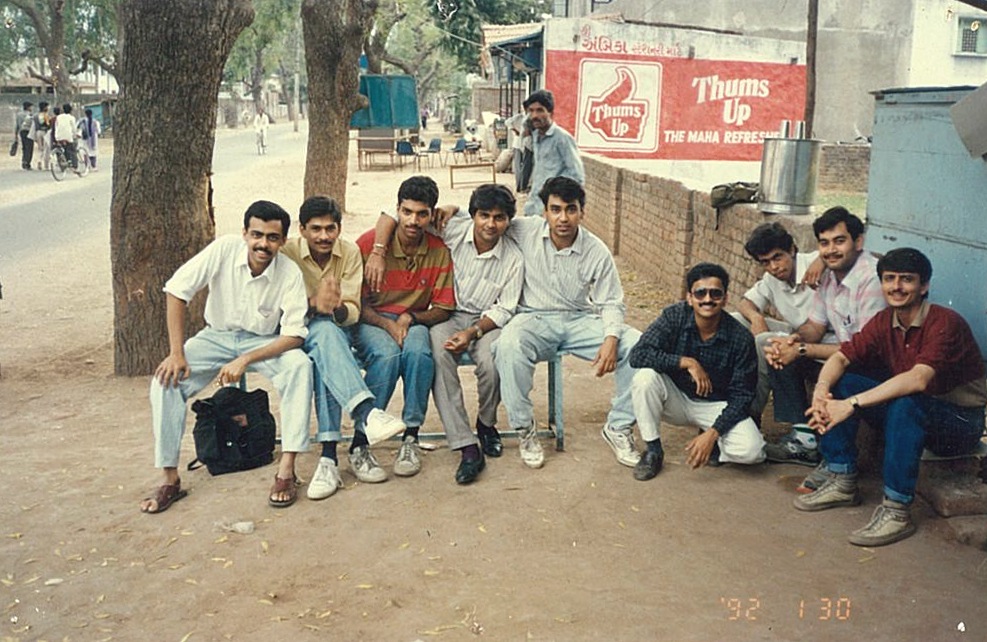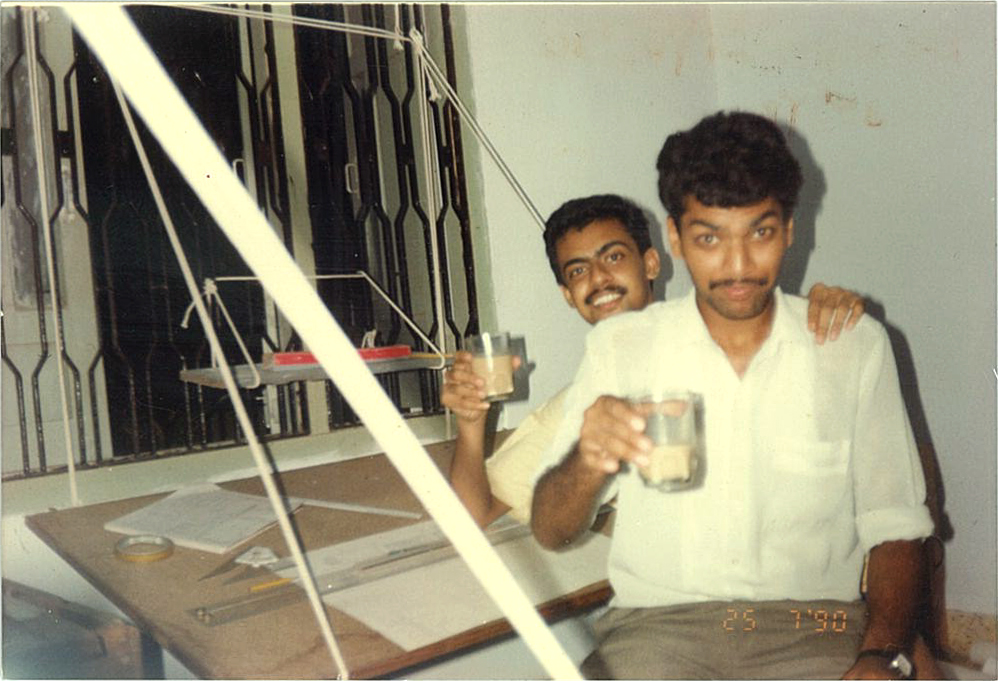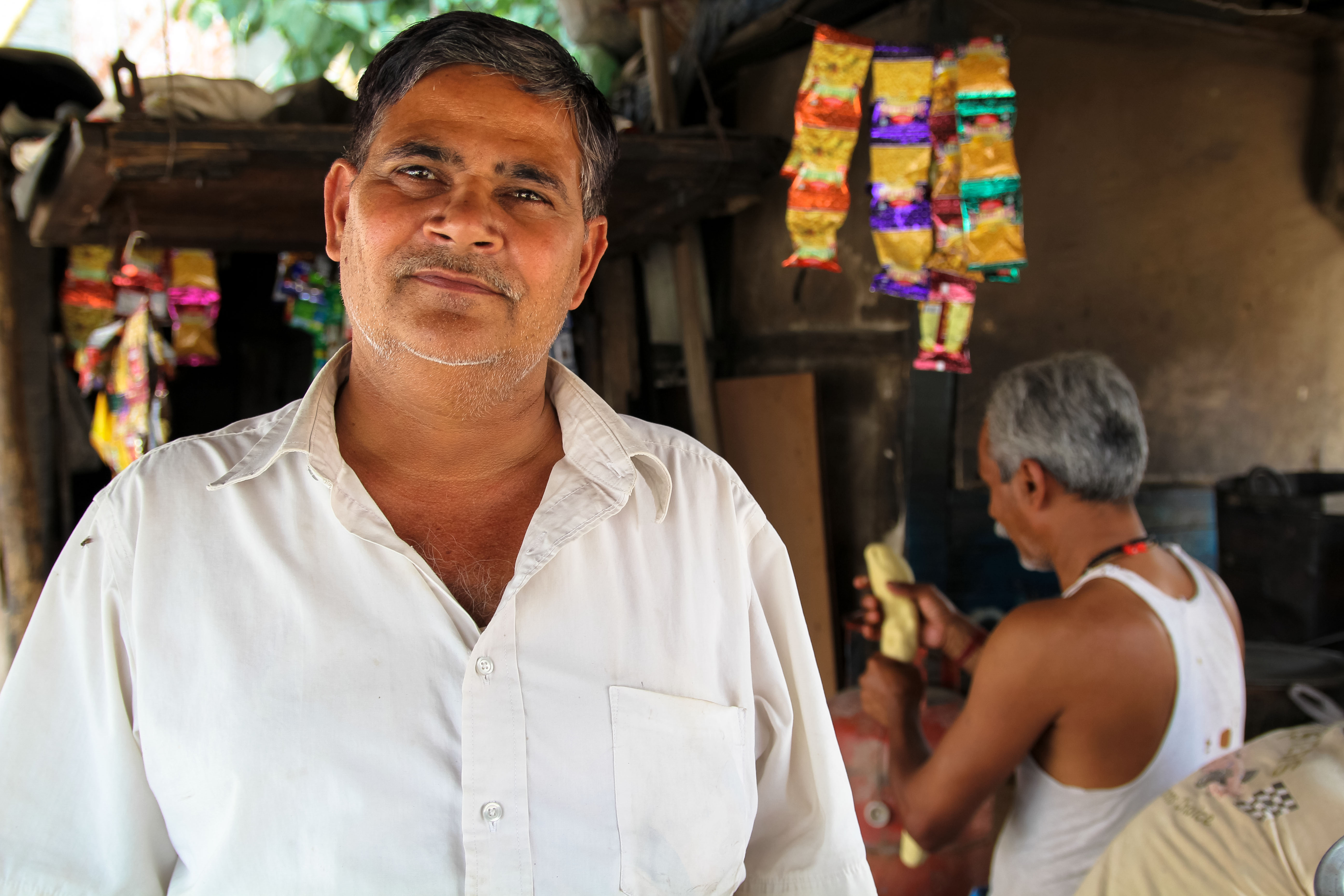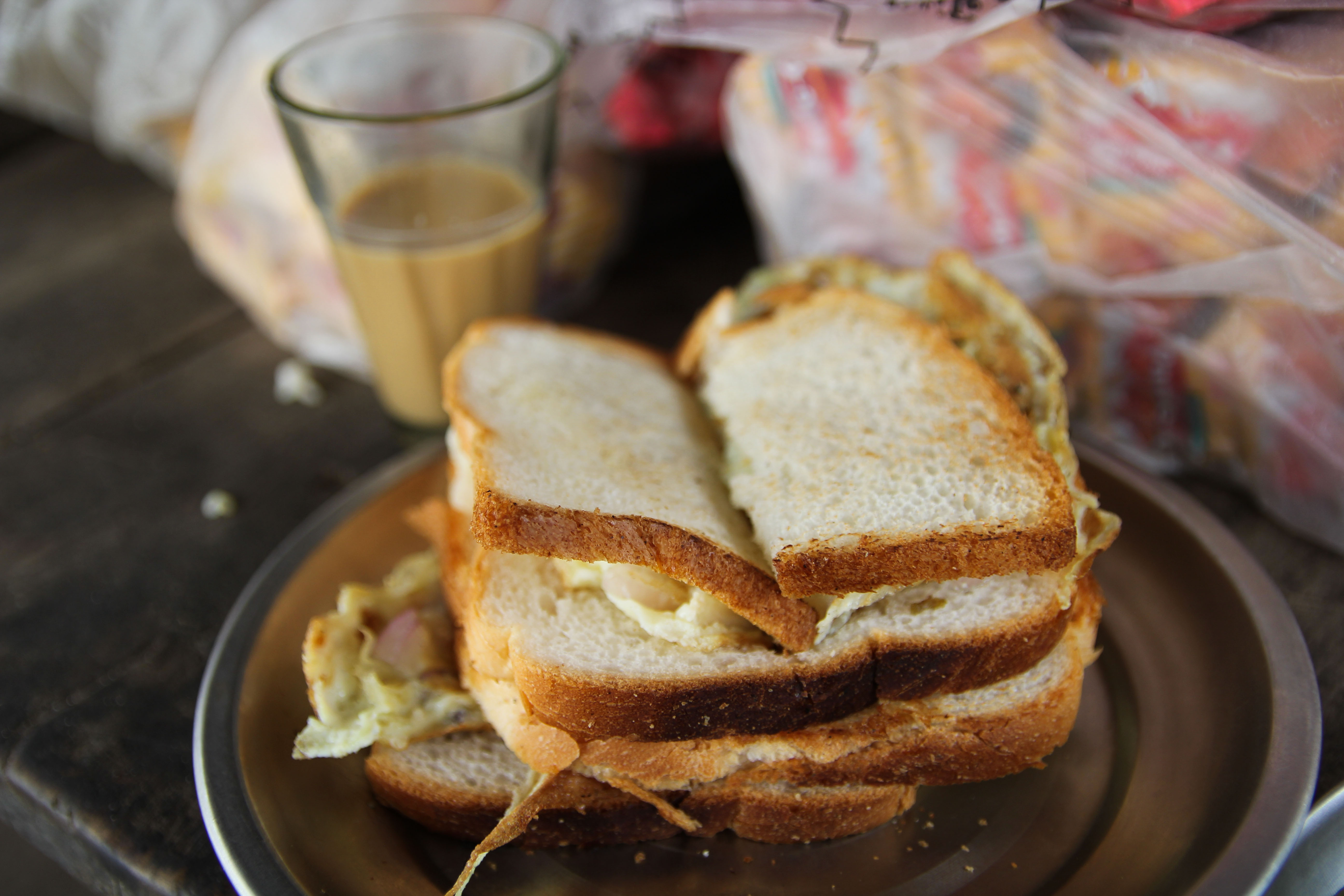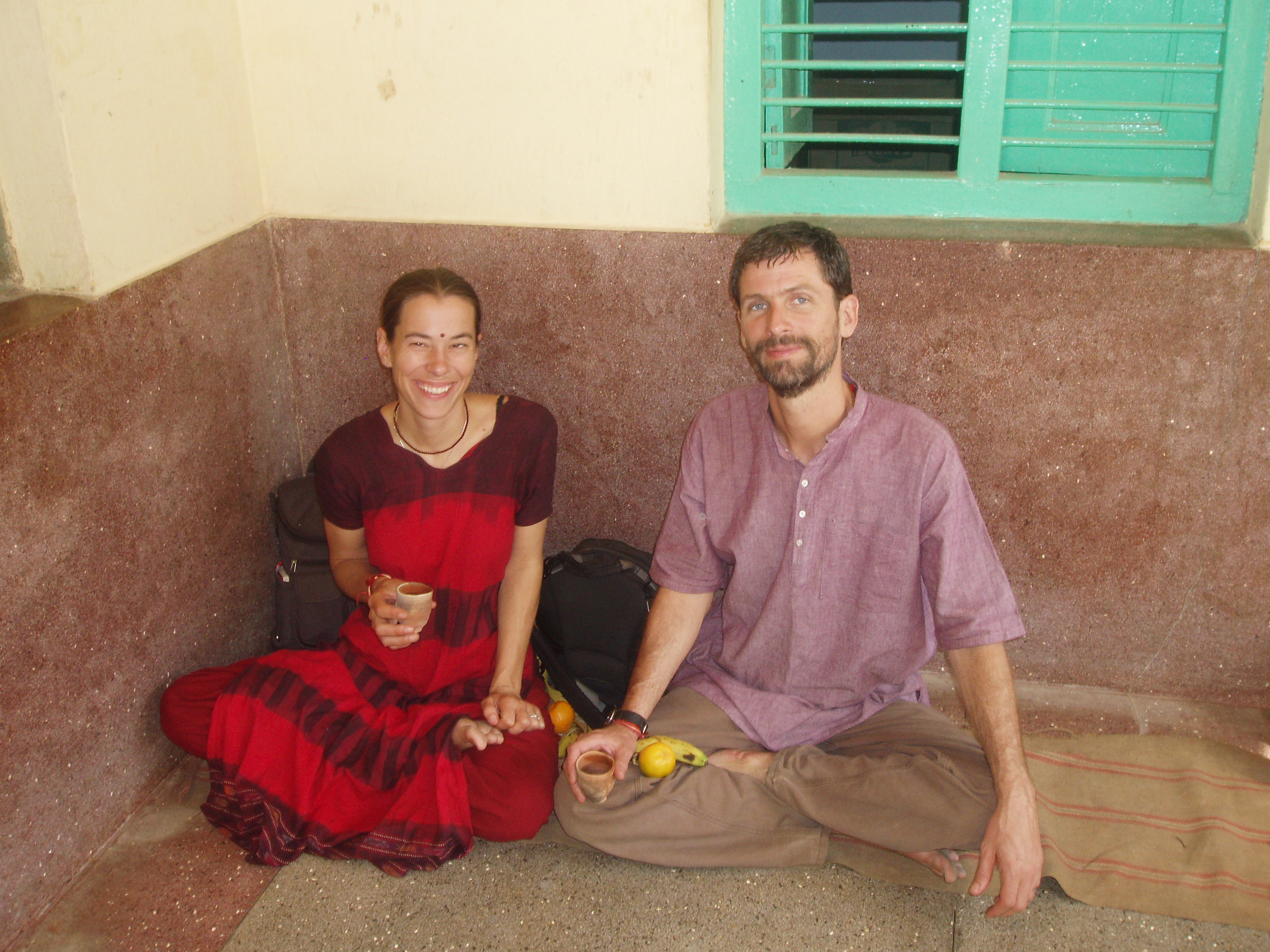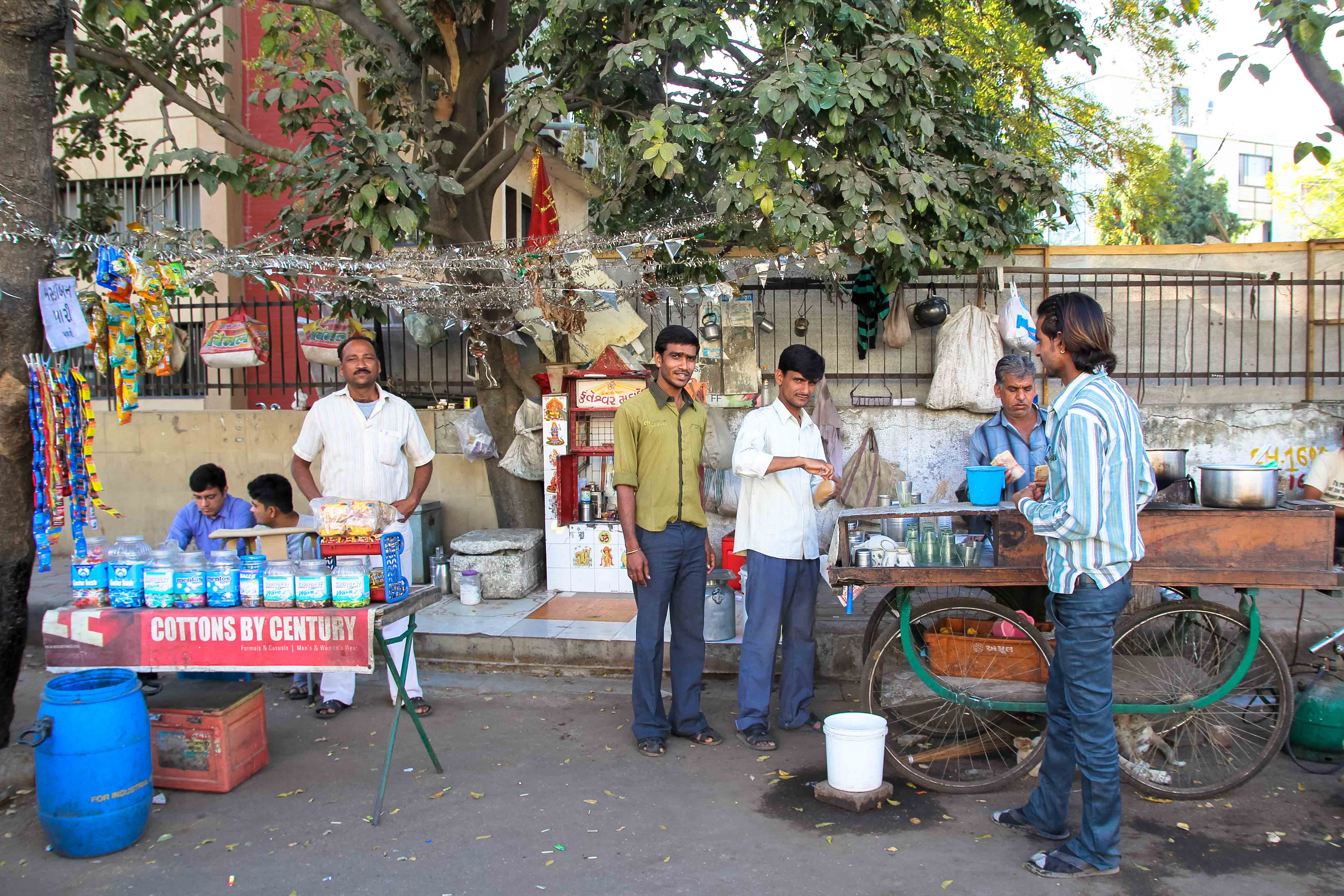A morning chai routine is more than just a means of consuming caffeine to start the day. It provides a chance to observe, reflect and be a part of a community. Daniele G., who today advises development institutions and governments on improving sustainability practices, worked in India in 1982. More than thirty years later he still remembers the cups of pre-dawn chai he would sip in rural Maharashtra. Here is his Chai Diaries entry:
My footsteps seemed inordinately loud crunching the dried leaves and random sticks along the dark narrow path heading away from my small room at the far end of the mango grove. Before placing my foot I took a slight momentary pause, hoping to diminish the disturbance of an otherwise nearly silent pre-dawn. The path wound under trees and past fields, gently rising and falling in near darkness. Beyond our compound, it skirted along the shabby old fences that could not hold anything in or keep anything out but that serve simply to mark property in these remote rural areas. It was a serene time, surprisingly cool enough to warrant a shawl and more than one layer of my thin cotton clothing. Bombay, about four hours away by road, rarely experienced this calming coolness during the hot months as the built mass of asphalt, steel, and cement continued to radiate the day’s heat through much of the night.
The beauty of that time was, in part, the soothing quiet of an era in rural Maharashtra when radios and electric lights were not so common and were used sparingly. Even the odors were muted at that hour. I loved the meditative gliding of those early morning walks, disturbed only by my sandals. Of those many walks, when thinking was unnecessary, the memory of only one thought remains now, thirty years later, because it accompanied my walks for months. I had heard of an early morning scorpion sting that swelled a neighbor’s foot to a painful lurid purple. Closed shoes were out of the question in this climate and conditions and, for quite a while, that small possibility of arachnids made each and every darkened step feel like an individual adventure.
My daily walk was not without intention. Of course, the walk itself had a soothing purpose all its own but my daily objective was nearly always the same. I had learned how to boil and mix the array of ingredients for an authentic spiced chai and needed fresh milk. Refrigeration was not available and so getting fresh milk each day was the only option and I had located the dudh wallah down the road. But this was not run-of-the-mill cow’s milk. No, I had discovered something much more tasty: water buffalo milk. At first look, I would not have guessed that this dark, nearly fierce looking animal that was often in a mud hole would produce such delicious milk. The flavor was not so very different from cow’s milk but the fat content was more than double and it made the best chai I ever tasted.
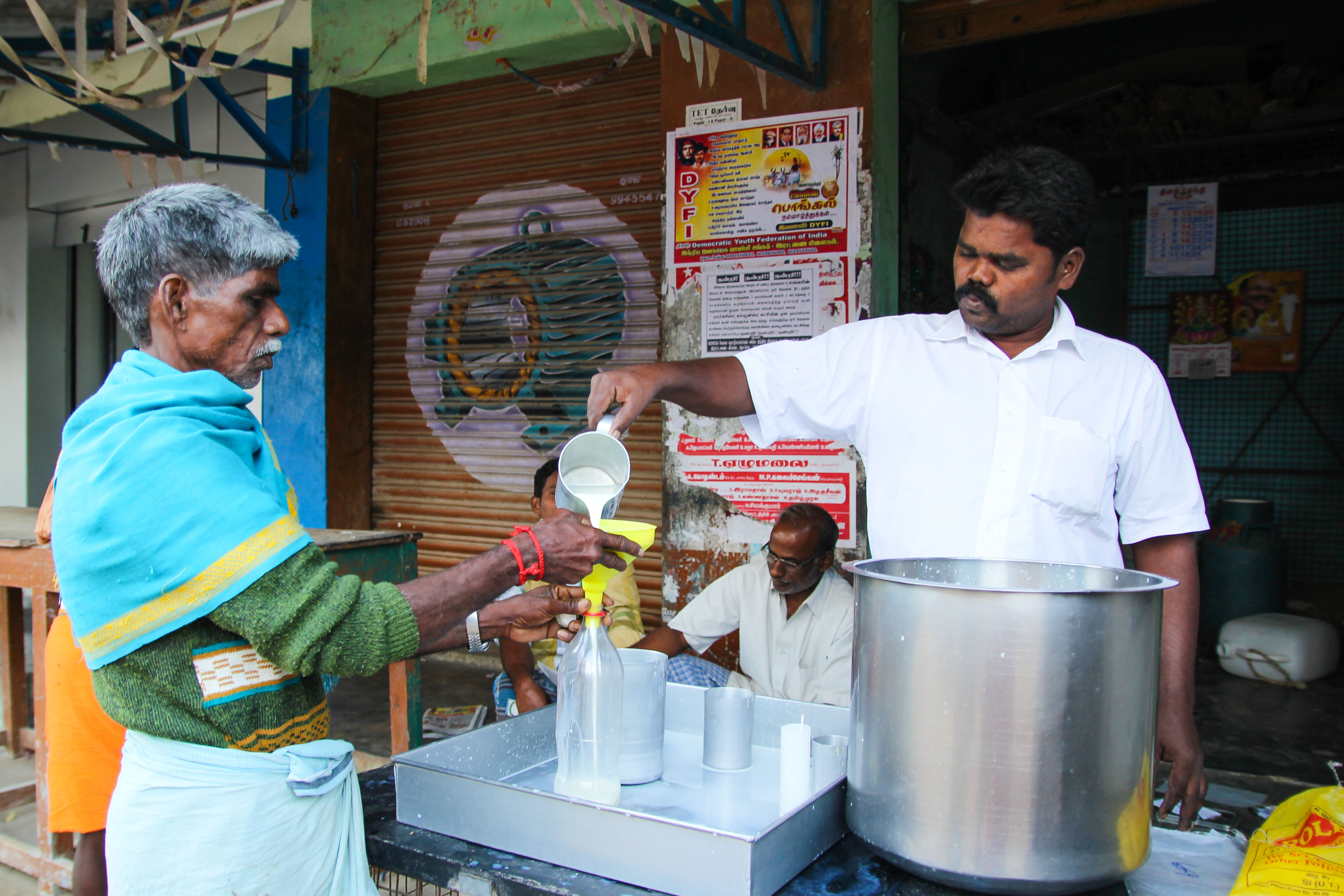
A dudh wallah in Rettanai, Tamil Nadu
Each morning, I walked early to the stalls before the milking occurred. This was important because the dudh wallah regularly diluted this rich milk as soon as it was in the big aluminum tubs. Arriving even 10 minutes late meant you got watered down milk. Apparently that was the norm. A couple of hours after milking, he loaded two large aluminum canisters with a long hooked ladle onto a sturdy bicycle and visited people in the small village for their delivery. I doubt anyone knew the milk had added water and I wondered how many things we simply do not know about the foods we purchase.
We never spoke of it, his dilution. He knew and I knew, but speaking of it seemed an unnecessary rudeness. On some mornings it seemed that it was not altogether pleasant for him to part with undiluted milk and even the slight upcharge that I quietly allowed him did not prevent him from occasionally attempting to fill my small bowl with a diluted batch. Of the many things I learned during that year, one was that what may be inappropriate from my perspective, was an accepted cultural or societal norm from another. I learned to suspend judgment when possible and to simply observe and learn. In fact, I sometimes felt slightly embarrassed to show up in his milking yard in the dark to be the only exception to his business practices. Yet, I always stood close by, watching that my portion came from the pure milk. Once I grew accustomed to the taste of full fat buffalo milk, it was not easy going back. In later years, returning to live in in the US and elsewhere, I never again bought cow’s milk. The relatively thin chalky flavor simply lost its appeal. I felt the same about chai in the US, Australia, and Europe; it paled in comparison to what was available in nearly every part of India, and almost always disappointed. Refined tastes sometimes carry with them a bit of a curse, like Tantalus never to be satisfied. But there were many satisfactions while there in that small rural community.
The whole milk, undiluted and still warm from the dark animal, was my reward for the walk. Its warmth comforting to my hands cradling the open aluminum container that served as both the receptacle and then later to boil the milk, and mix the chai, one pot for everything. It was 10 inches across and about five inches deep with a broad half inch lip all around to help grip and pour. Heading back along the path to my hut I more than once tripped and spilled part of the milk. I accepted the consequence of my carelessness, less chai to drink and never returned for more milk. Buying a closed canister would have cost the equivalent of a week’s expenses and it was thus an unnecessary luxury. Besides, many local families had only one or two such containers. Walking with that open bowl was an act of simplicity, an invitation to mindfulness, a soft stride, and patience. Once back, I carefully lit the small gas stove, even matches were not plentiful, and judiciously measured out the tea and masala ingredients. As the smell of gas and sulphur quickly dissipated, the aromas of chai emerged. The sharp fragrance of tea was first, the cinnamon, pepper, and other spices slowly emerged into the cool morning air and then finally, as it all came to a boil, the caramel scent of sugar added last. A cotton cloth served for filtering and no tea cups, just small sturdy glasses as was the local custom. The morning focus, nearly every day, was this chai ritual. It would be several hours yet before a breakfast could be had and chai’s familiar aromatic warmth was a like a first greeting from a friend, constant and intimate, a small ceremony that never failed to soften my face in a grateful smile.

A girl in Hathlana, Haryana with her water buffalo.
Pre-dawn is a wonderful time to move in India; heat, dust, humans, and noise are all subdued. On some mornings I went in another direction on a much longer walk ambling past the sleeping local village. The objective was a natural thermal spring in a valley that required crossing a broad, mostly shallow river, always hoping that it was low enough to allow a dry crossing on the stones. Near the banks among the scrub trees sadhus, wanderers, and mendicants occasionally camped for the night. Even at two or three in the morning the occasional smoky scent of a chillum or the faint glow of a beedi – the preferred local smoke of the poor – were signals of their presence. This broad valley had long been held as a holy place and dozens of temples dotted its landscape of small villages.
On the other side, further up the valley, was a tiny ancient dome-roofed stone temple unmarked and unadorned. The temple was always empty at this hour and an ideal place to sit quietly. I brought Paul Horn with me on that walk once. We had met while I assisted the mounting of the ITA’s Ancient Wisdom and Modern Science conference in Bombay, where he gave a concert, and he had come out for a visit to the community. When we reached the temple and quietly sat inside I could not find my usual serenity, I could only recall his haunting flute recordings in other unique places like the Taj Mahal or the Great Pyramid and spent a half hour alternating between kicking myself for not suggesting that he bring his flute and then feeling selfish for wanting a solo concert. Later however, over cups of hot chai and breakfast, I did get something far more valuable: some of the most memorable advice in my 24 years of life.
Near the temple, a natural hot spring served as the ideal prelude to sitting quietly in that temple. If we reached it before dawn when farmers came there to wash their cows and other things, it served as a silent magical place to soak. Enveloped in the dark steamy water and leaning back to look up at a brilliantly star-flecked sky was a sublime luxury and well worth the 40 minute walk. On the return, in the pre-dawn glow, the village chai shop was just coming to life and we were the first guests. With very limited funds, this was a delightful small luxury and it was nearly impossible to walk past the inviting smell of the first morning brew.
Usually alone I asked for one but on that day, naturally I would have asked for two or “Do chai bhaai.” The small thick four-ounce glasses came with mismatched saucers under them and if you could not wait for the liquid to cool, a small amount could be tipped into the saucer where it cooled and could be sipped. I never did that and simply enjoyed the slow process of the ritual itself. It was an aromatic delight and extended the experience beyond the few minutes that it took to drink the small portion and watch the goings on in the shop and the waking community just outside.
The décor was standard in the region: Hard and rather small angular chairs and simple wooden tables that had once been painted although it was difficult to ascertain what the original color might have been. An open-air room with no glass in the windows or simply no walls. Where there were walls, they were a pastel shade glaring in the light of a single bare bulb. The featured decorations were inevitably a brightly hued portrait calendar and a small alter or shrine where incense or a flame sometimes burned. Of the vast pantheon of deities depicted in the wall pictures and calendars across India, four were most popular and ever-present: Ganesh, Krishna (sometimes with Arjuna), Lakshmi, and the pair of Ram & Sita. Their ornateness and intense coloring were fascinating, and in stark contrast to typical wall calendars in Europe and the US where saints or Christian themes did certainly appear but they were much more likely to feature an advertisement for the utterly mundane such as tires (sometimes with less mundane cleavage to draw attention) or some bucolic pastoral scene. Here religion, or at least reminders of the spiritual life, were ever present as the stories or parables of these Hindu deities that graced nearly every room I ever saw in India.
That long ago morning with Paul etched the chai shop indelibly in my mind. We spoke for hours and I listened to the wisdom he shared about his own travelling experiences and life choices as I was facing choices of my own. Paul told me about his early life and how being a musician was not what his family expected of him. He struggled at first, playing in cafes to make ends meet but always steadfastly doing what he loved regardless of the earnings or expectations. Eventually, doing what you love will likely lead to doing it well and the passion of that pursuit is what opens doors to success; a success that is on your own terms. Paul was certainly the embodiment of that with world-wide fame and a number of very successful albums as a product of his passion for the music he loved. He said, “it is never work if what you are doing is what you love”. This idea may not have been new but, on that crisp clear morning, surrounded by the steamy aroma of chai after a long serene soak in the springs, it penetrated straight to my heart and became a guiding memory for the rest of my life. Thank you Paul.



